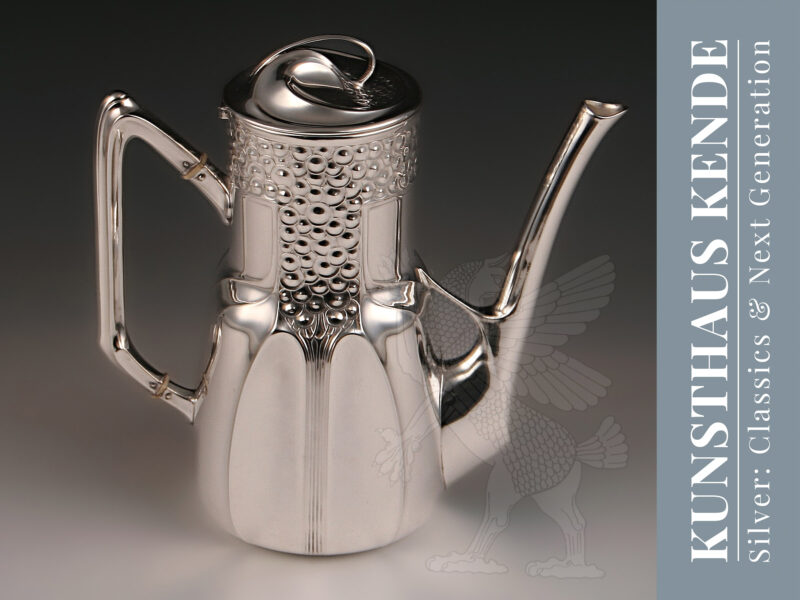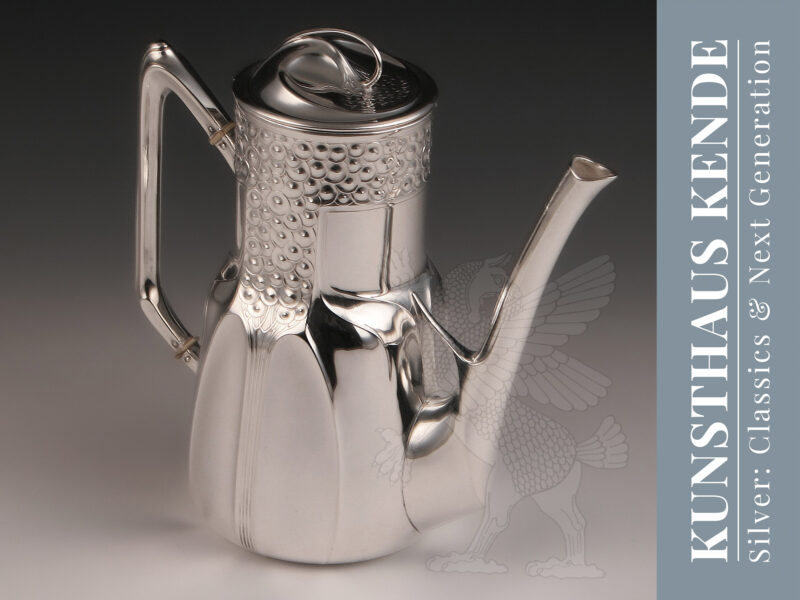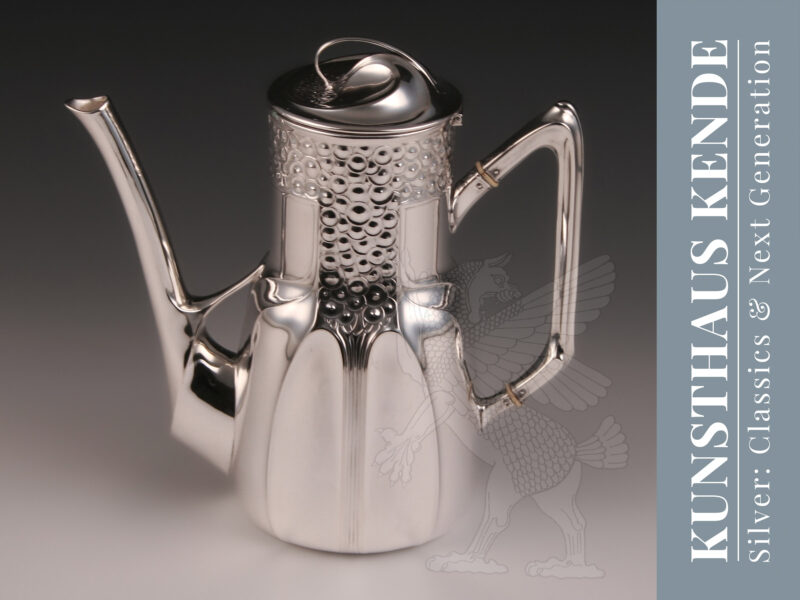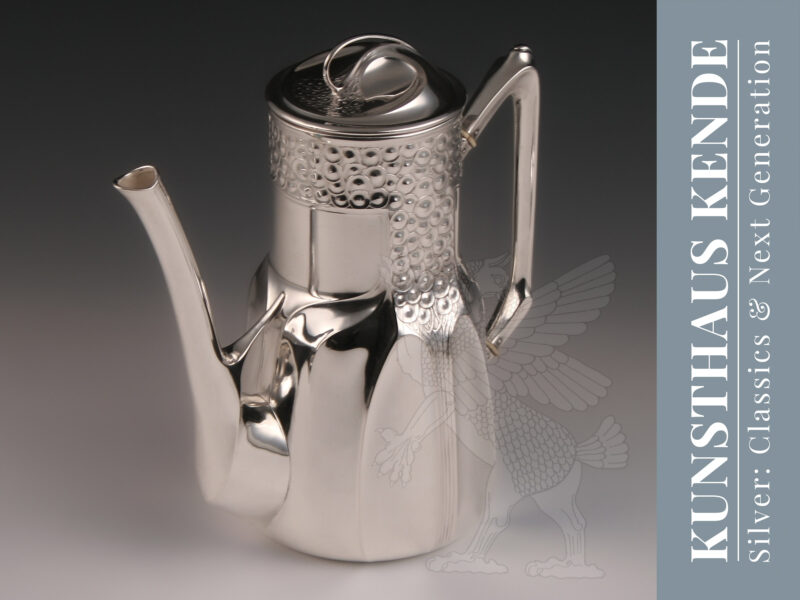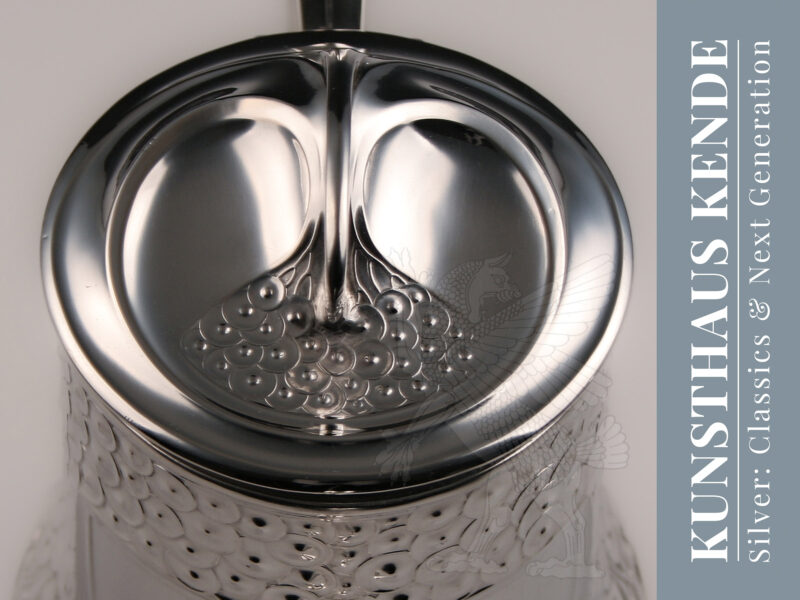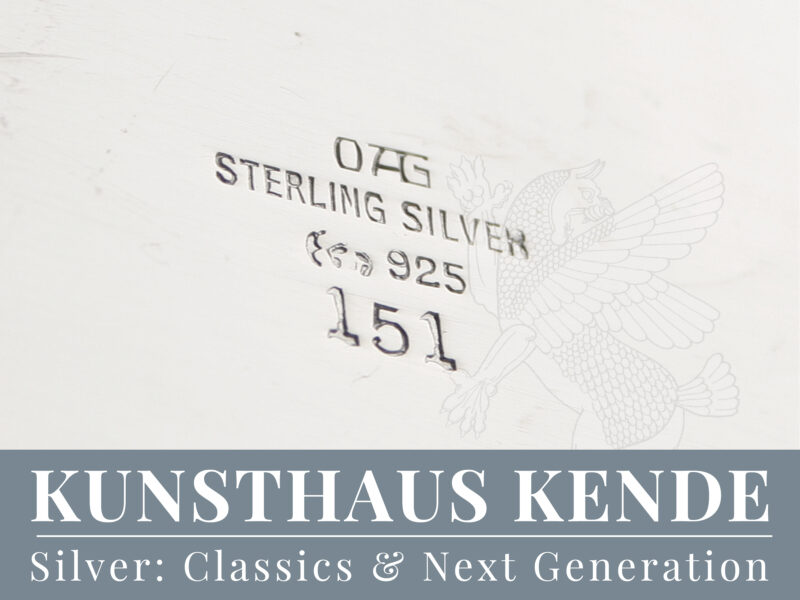Item number: 60198
A rare sterling silver coffee pot,
Cologne circa 1900/1905 by Orivit
The body subdivided on the underside by smoothly polished, arched fields and extends over ornamental folds into an abstract tree of life motif, the foliage of which adorns the upper rim. The spout connected to the body via a decorative joint, the angled and vegetal moulded handle is connected to the body through heat stoppers made of bone. The lid following the decoration of the body whose folds describe a continuous ornament with the knob. Stamped on the underside with the Orivit company mark, the fineness and the model number #151.
Very elegant Art Nouveau coffee pot in silver in appealing, authentic condition – original without monograms and without repairs. The complete service can be found in the possession of the Bröhan Museum, Berlin and is illustrated in: Dedo von Kerssenbrock-Krosigk (ed.): Metallkunst der Moderne (Bestandskataloge des Bröhan-Museums VI) [Metal art of the modern age (stock catalogues of the Bröhan Museum VI)], Berlin 2001, p. 255.
The set has also been published in the contemporary literature in 1904, there without sugar bowl and tray at: Die Rheinlande: Vierteljahrsschr. d. Verband der Kunstfreunde in den Ländern am Rhein [Die Rheinlande: Quarterly publication of the Association of Friends of the Arts in the countries along the Rhine], edition 8, 1904, p. 592 (for the digitalized edition in german please see here).
Another coffee tea service with tray by Orivit in silver with very similar ornamentation is also in the possession of the Rijksmuseum, Amsterdam.
22.9 cm / 9.01″ length, 11.9 cm / 4.68″ width, 23 cm / 9.05″ tall; 873.2 g / 28.07 oz
The rise and decline of the Orivit silverware factory
Orivit became famous in the late 19th century for its very sophisticated and decorative works in Art Nouveau style, which were mainly produced in pewter and Britannia silver and far less frequently in silver.
In 1894, the entrepreneur Ferdinand Hubert Schmitz (1863 – 1939) took over the “Rheinische Bronce- und Metallwarenfabrik Johann Heinrich Welke” [The Rhenish Bronze and Metalware Factory Johann Heinrich Welke], from which ORIVIT AG emerged in 1898. Orivit’s works, which were of high aesthetic quality, were awarded a gold medal at the World Exhibition in Paris in 1900 and were received with great enthusiasm by contemporary art critics, which in turn boosted the company’s foreign business. However, large-scale investments in technical innovations, which led to large rival companies such as WMF, Osiris and Kayserzinn seeing Orivit as a growing threat, led to economic difficulties for Orivit, so that the company became insolvent and was taken over by WMF in 1905. Although objects in silver were produced by Orivit in much smaller numbers anyway, production in silver ceased completely immediately after WMF took over.
The special artistic feature of Orivit’s work is in the skilful combination of Belgian, French stylistic tendencies of Art Nouveau with those of German Jugendstil.
